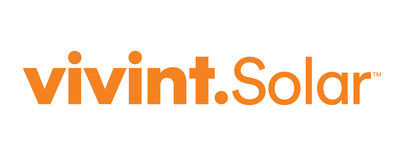[ad_1]
LEHI, Utah, Aug. 22, 2018 /PRNewswire/ — Vivint Solar, Inc. (NYSE: VSLR), a leading full-service residential solar provider, today announced the Florida Public Service Commission has approved its solar lease product proposal, allowing homeowners in Florida to install solar panels from Vivint Solar for no money down and get guaranteed solar production.

Solar leases from Vivint Solar will be immediately available in the St. Petersburg and Orlando areas. New Vivint Solar customers in other markets in Florida may also have the option to qualify for a solar lease.
“We appreciate the commission for clarifying its position and removing any stumbling blocks to the expansion of customer choice for solar power in Florida,” said Vivint Solar CEO David Bywater. “Our solar lease product allows many more customers to benefit from clean, renewable energy, and we are excited that our new Sunshine State customers can adopt solar at zero down for the first time.”
Under a lease agreement, Vivint Solar designs and installs a solar energy system for no upfront cost. The company provides clean, efficient energy from the abundant Florida sunshine to customers, who pay a fixed monthly amount, which provides most customers with overall energy cost savings compared to their local utility. On average, Vivint Solar customers across the United States save up to 20 percent with Vivint Solar’s leases relative to their current utility rates.
Vivint Solar takes care of all necessary permitting and paperwork and customers have no maintenance responsibility for the system.
Vivint Solar expanded into Florida in 2016. The availability of leases provides more flexible options to go solar for Florida homeowners, who can also purchase a system from Vivint Solar outright or finance the purchase with monthly payments through one of the institutions Vivint Solar has relationships with, or through their preferred lender.
For more information, visit www.vivintsolar.com/state/florida.
About Vivint Solar
Vivint Solar is a leading full-service residential solar provider in the United States. With Vivint Solar, customers can power their homes with clean, renewable energy and typically achieve significant financial savings over time. Offering integrated residential solar solutions, Vivint Solar designs and installs the solar energy systems for its customers and offers monitoring and maintenance services. In addition to being able to purchase a solar energy system outright, customers may benefit from Vivint Solar’s affordable, flexible financing options, power purchase agreements, or lease agreements, where available. For more information, visit www.vivintsolar.com or follow @VivintSolar on Twitter.
Press Contact
Vivint Solar
Helen Langan
Senior Director of Communications
385-202-6577
pr@vivintsolar.com
![]() View original content with multimedia:http://www.prnewswire.com/news-releases/vivint-solar-announces-availability-of-solar-leases-in-florida-300701073.html
View original content with multimedia:http://www.prnewswire.com/news-releases/vivint-solar-announces-availability-of-solar-leases-in-florida-300701073.html
SOURCE Vivint Solar
[ad_2]
Source link






 Copyright 2018 KXLY.com. All rights reserved. This material may not be published, broadcast, rewritten or redistributed without prior permission.
Copyright 2018 KXLY.com. All rights reserved. This material may not be published, broadcast, rewritten or redistributed without prior permission. 







